
Here's what led to a record-setting 5.4 million business applications last year
Here's what led to a record-setting 5.4 million business applications last year
It's a record-breaking era for new businesses.
The IRS received nearly 5.4 million business applications in 2021—a peak since the U.S. Census began producing the Business Formation Statistics report in 2004. The report showed that there were about 1 million more business applications in 2021 than in 2020, which was also a record-setting year.
The first half of 2022 is trailing slightly behind last year, with 2.5 million applications through June compared to 2.8 million at the same time last year. While the growth may be slowing, entrepreneurs have still started more businesses recently than in years past.
Small businesses employ a little more than half of the American workforce, so adding more of them could propel the economy and build more resiliency. The true test, though, will be how many applications actually turn into businesses with payrolls. Stacker analyzed U.S. Census Bureau Business Formation Statistics data to investigate trends in new business applications, including timelines, industries, geographies, and the likelihood that they'll grow to add jobs to the U.S. economy. Stacker looked at seasonally adjusted U.S. data from 2004 through June 2022.
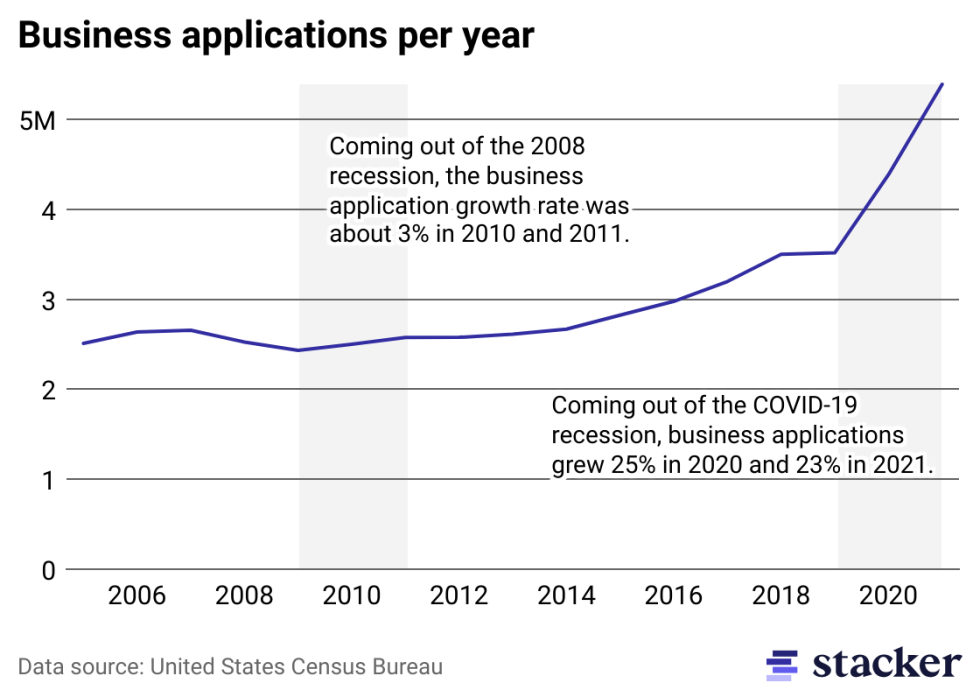
New business applications are on the rise
Recessions often spur new business ventures, but the growth out of the pandemic-induced recession was much more profound than anything seen in the wake of the much longer 2008 recession. For perspective, it took from 2009 to 2016 (about seven years) for business applications to increase by 22%, whereas applications grew more than that in both 2020 and 2021.
Several factors have fueled this uptick. Unprecedented layoffs in spring 2020 led many people to seek new forms of income. Increased unemployment benefits and pandemic stimulus checks meant people had more cash to invest in their ideas and to keep themselves afloat while their new ventures gained traction. And for homeowners, a vast increase in home values meant they had the opportunity to access additional startup capital.
In other words, entrepreneurs had the reasons and resources to finally put their business ideas to the test.
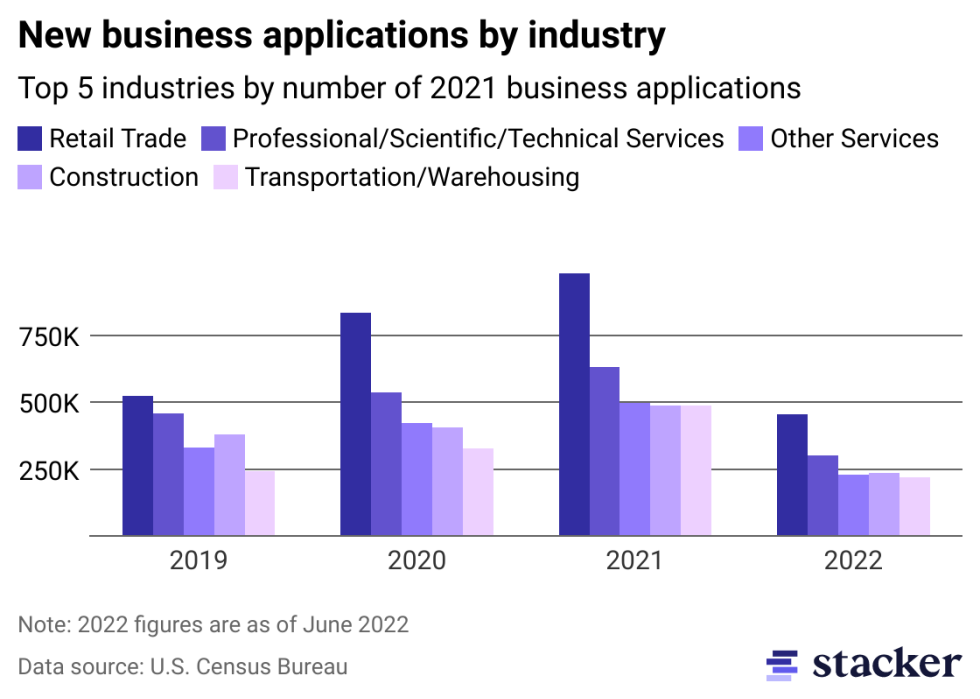
Retail leads the way in applications
The most new business applications are in retail, which has led all industries since 2016.
Even as retail stores temporarily closed, boarded up their windows, and laid off employees, many more potential retailers entered the scene, according to Bureau of Labor Statistics data. Many new retailers were sole proprietorships—individuals selling their own goods primarily online—or were replacing shops that closed during the pandemic.
Moreover, some retail subcategories grew sales in 2020, including online shops, food and beverage stores, and hobby stores. Online shopping, in particular, gained immense popularity amid local restrictions on businesses and gatherings during COVID-19 spikes and has continued to grow sales since then, according to Census quarterly retail e-commerce reports.
As of April, retail employment was up by 18% compared to the same month in 2020 and was even slightly higher than in April 2019, according to BLS data.
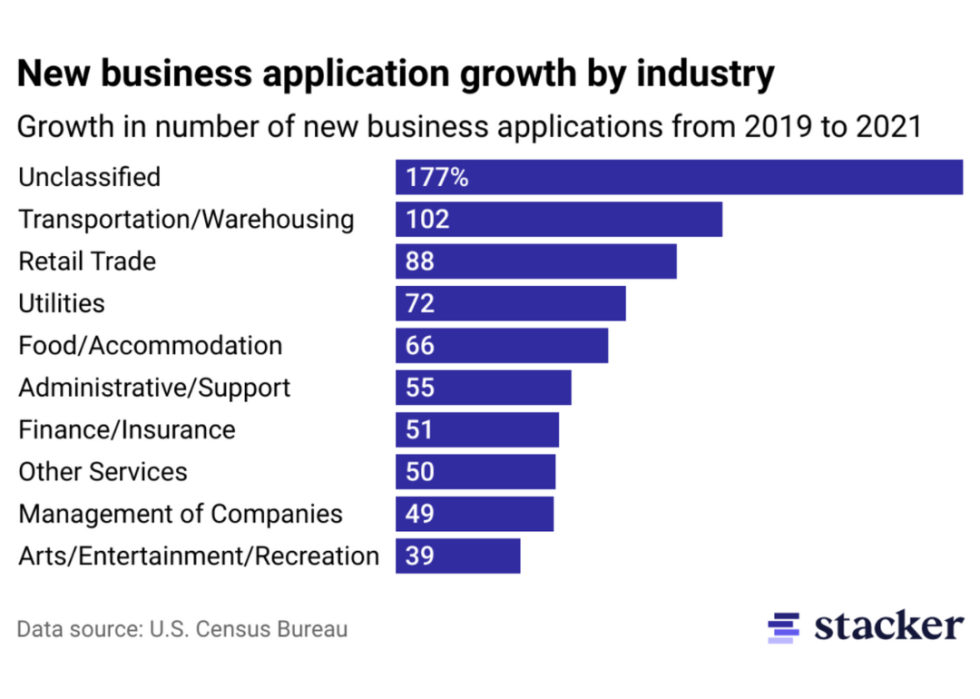
Transportation, warehousing, and retail grew applications most
Retail was also among the leaders in business application growth between 2019 and 2021, but it didn't expand as fast as transportation and warehousing. The same reliance on online shopping that fueled new retail businesses also pushed transportation and warehousing forward because getting goods into people's hands demanded a better pipeline.
The steepest growth occurred in unclassified businesses, which went from approximately 52,000 to 144,000 applications.
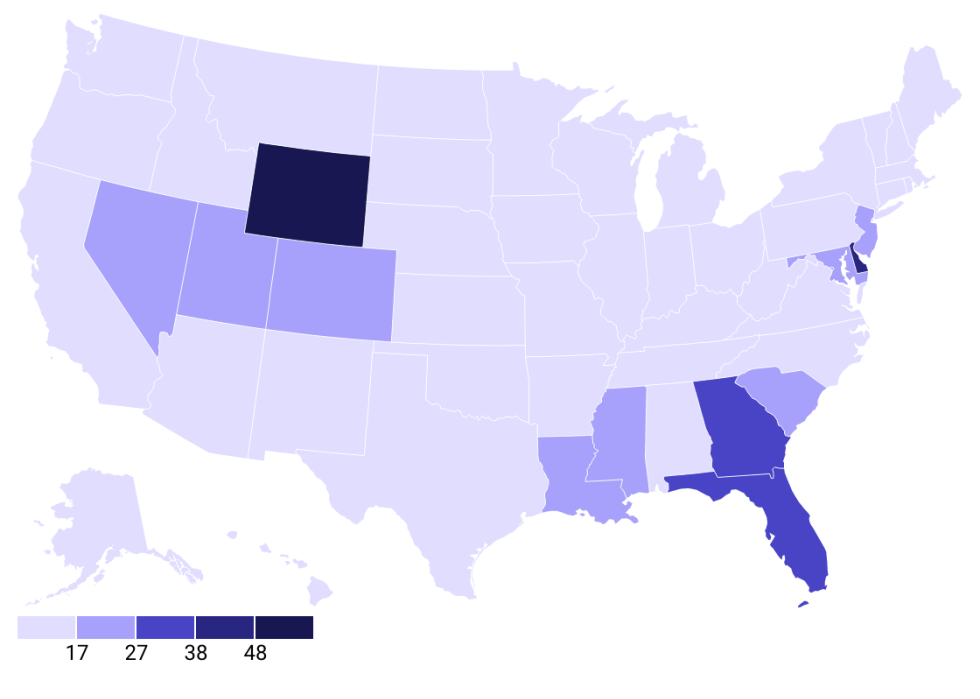
Wyoming and Delaware remain leaders in business applications
Most of the country saw similar levels of new business applications per capita in 2021, with a few standouts. Wyoming was most notable, with 58 applications per 1,000 people. Stacker highlighted Wyoming's leadership before, noting the state's tax-friendly policies and an influx of out-of-state investments and new residents. The Wyoming Business Council stated that its primary industries include natural resources, tourism/outdoor recreation, and agriculture. But the council is also working to support new industries in the state, including professional services, technology, and advanced manufacturing.
Delaware was close behind with 45 new business applications per 1,000 people. The number of businesses that have incorporated in Delaware has surpassed 1 million, including more than two-thirds of Fortune 500 companies. Incorporating in Delaware can take less than an hour, and the state offers a specialized corporation court to expedite business trials. Other leading states included Georgia (30 new business applications per 1,000 people) and Florida (29).
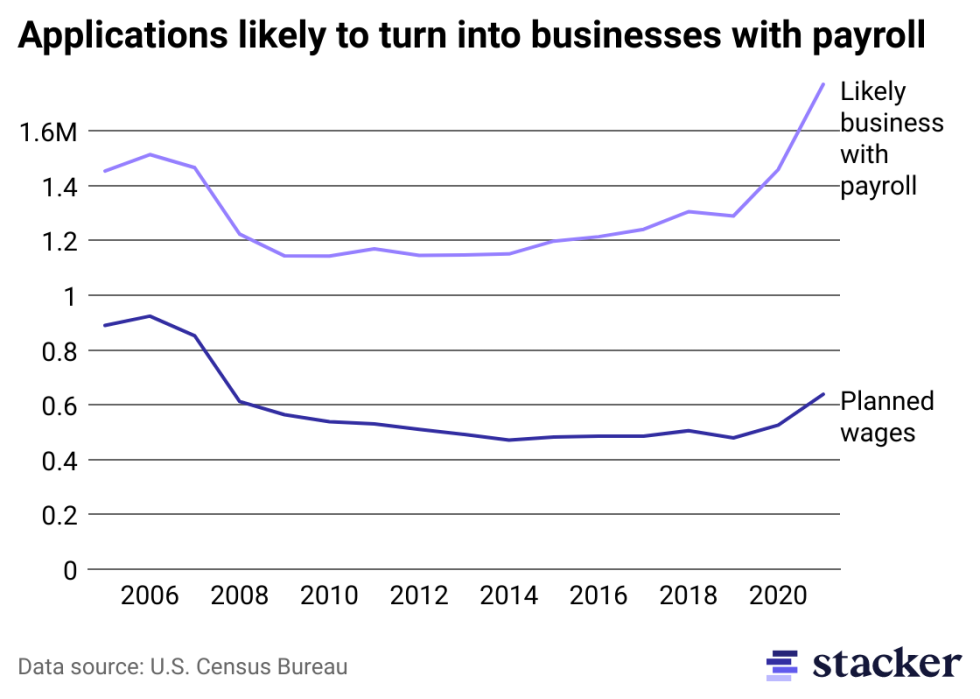
Higher volume, lower share of businesses likely to develop payrolls
The volume of applications likely to turn into businesses with payroll increased in 2020 and 2021. The Census determines whether an application is likely to develop into a business with payroll by looking for a few characteristics, including a plan to hire employees, a planned date to pay first wages, a certain collection of industries, and whether the application is from a corporate entity. The number of applications with planned wages has also increased compared to previous years but hasn't hit record levels.
However, as a share of total business applications, both those statistics have decreased. Just 32% of business applications in the first half of 2022 were deemed likely to turn into businesses with payroll, compared to 58% in 2005. The proportion has been decreasing consistently since then. The same goes for businesses with planned wages, which comprised 35% of applications in 2005 but just 11% of applications so far in 2022.
That means the number of jobs per new firm is small, limiting the economic impact of those new businesses. Many applications came from self-employed individuals who may have been laid off and sought new ways to make a living rather than entrepreneurs with long-term dreams to create growing businesses.
Future data and analysis will show more behind the application growth spurt, including how many applications do go on to form businesses with employees and how that number compares to the number of businesses that ultimately closed during the pandemic.



